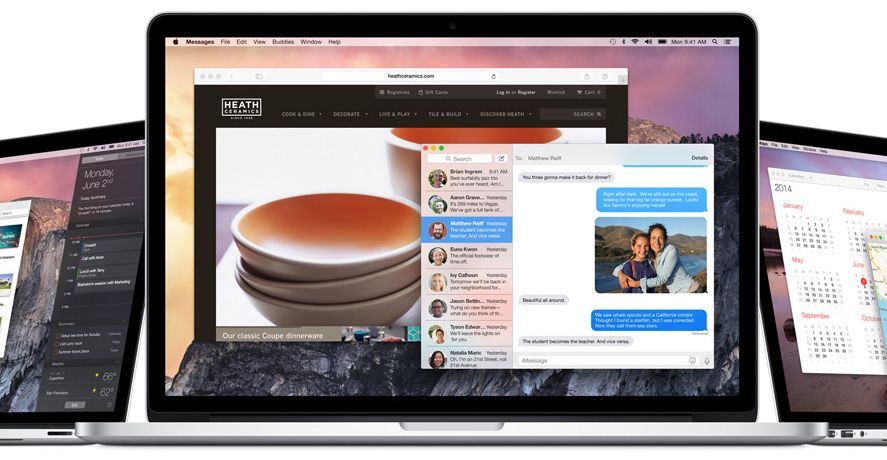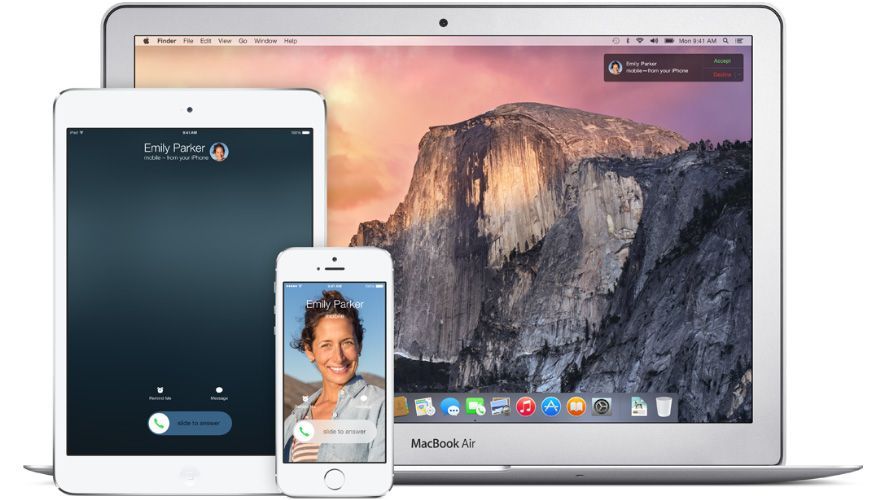Apple has presented at the Apple Worldwide Developers Conference (WWDC) 2014 the new software features to arrive throughout the year for the company’s products. Highlights include the arrival of new versions of its iOS and Mac OS operating systems, as well as a huge number of improvements to its ecosystem of applications.
Mac OS X 10.10 Yosemite
Yosemite is the name of Mac OS X 10.10, and will be the successor to Mavericks, the current OS, which has received a comprehensive facelift to its interface to make it more similar to the look of iOS. You can see this in the flatness of the dock as well as the in the notifications center, which will now show a tab with nearby events alongside your latest notifications. It will also improve the Spotlight search tool, so that it shows results from the Internet and even your files stored in the cloud thanks to the new iCloud Drive service.

To make this closening between the mobile and desktop worlds even clearer, a program called Continuity has been introduced to let you share and work on tasks simultaneously between your iOS devices and machines with Yosemite. This so-called Handoff system allows, for example, Safari to show the pages you’re viewing on your mobile browser on your desktop as well, or start writing an email on your phone and finish it on your laptop. This feature extends to iWorks documents, photos, calendar events, and even iMessage conversations, MMS and SMS, which you can view from Mac OS X.
iOS 8, refining its predecessor
Most of the aforementioned new features also extend to the new iOS 8 for iPhone, iPod Touch, and iPad with regard to the integration with Mac OS X via iCloud Drive and Continuity, as well as the expanded Spotlight search options powered by Siri, who you can now bring up with a simple voice command.

Many Apple apps have also been refined, as in the case of iMessage, which is finally to receive a big upgrade to its features (advanced group management, sharing for more type of content, etc.) to bring it up to scratch with the other main IM services.
App Store is also set to receive updates. Now, as in Google Play, there will be a section that recommends apps based on your tastes. Another feature that’s soon to arrive is the option to publish and download beta versions of the programs.
But undoubtedly the two most important announcements in the mobile sphere are focused on the internal architecture of the operating system. These internal changes, which have been dubbed Extensibility, will finally let you easily interact with third-party apps when it comes to transferring documents between them, something that’s always been a palaver on Apple devices. The other big improvement is the inclusion of external widgets that, among other things, let you do things directly from tabs and notification windows without going into the app itself.

At the development level there has also been an important announcement: the creation of a new programming language that will be able to coexist with C and Objective-C for iOS programming. Swift aims to be a language with a simpler syntax and more features when it comes to working with it. To allow developers to get familiar with it, Apple has released a free 500-page iBook with everything necessary to learn how to use it.
Mac OS X 10.10 and iOS 8 will arrive for free this autumn for all users, although throughout the summer you can access the beta (at least of Yosemite) even if you aren’t a developer. The full video of the conference is now available from the official Apple website.









